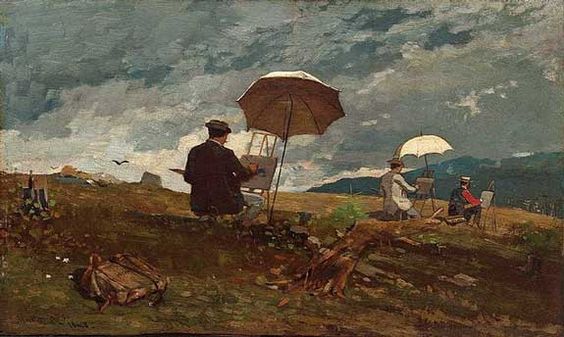When an artist travels to somewhere new, or goes out on location to work plein air, there is always a sense of expectation. Is that good, or does it hinder one's reactions and inspirations?
I was reminded of this frequent conundrum when I read a statement made by photographer Michael Eastman in Ivy Cooper's interesting article, "From Drive-Ins to Palazzo in ARTnews, summer 2010 issue. Eastman is considering travelling to Japan, New Zealand and Antarctica for new photographic ventures. When he mentioned this, the obvious question to ask was what subject matter will he photograph. His reply really resonated with me. "I'm not sure what I'll find there.
I think the biggest risk to an artist is expectations. (My emphasis) Whatever your expectations are, they always get in the way. If I don't have expectations, if I hit the ground running, if I move forward and start looking, I'll see new things."
When I thought about Eastman's remarks, I realised how accurate he is. I have found, time and time again, that if I switch off my brain when I arrive somewhere, and just let my subconscious 'float' and my eyes wander all over, then suddenly, bang, there is something interesting. If, on the other hand, I have envisaged some scene or object ahead of time, expecting to find that it is what I want to draw or paint, I frequently feel flat and uninspired when I get there. Totally perverse, but there it is! Of course, if one is commissioned to do a specific thing or landscape, then that is another matter. Even so, I try to feel neutral, without any preconceived idea of how I am going to tackle the commission. At least, like that, new angles, new approaches, fresh concepts can all come to mind.
If one thinks of the wonderfully spontaneous watercolours,for instance, that John Singer Sargent did when he was travelling, I suspect that he did not burden himself ahead of time of too many expectations. He just had his painting equipment to hand and let his keen eye spot the opportunities.
Artist in the Simplon, c.1909 - John Singer Sargent (Image courtesy of Fogg Museum (Harvard Art Museums), Cambridge, MA, US
This watercolour, Artist in the Simplon shows just such an approach. Sargent was following in the footsteps of an earlier master of watercolours, Winslow Homer. He had pioneered the use of watercolours for spontaneous, fluid work that showed an opportunistic artist's eye. English "Cloud Shadows", painted in 1890, is an example of this).
Cloud Shadows, Winslow Homer, oil on canvas, (Image courtesy of the Helen Foresman Spencer Museum of Art)
Artists Sketching in the White Mountains, Winslow Homer (Image courtesy of Portland Museum of Art)
Expectations, in most situations, tend to let one down. In art, they seem to dampen, even stifle, creativity. Spontaneity, openness and an observant eye seem to be good substitutes.


